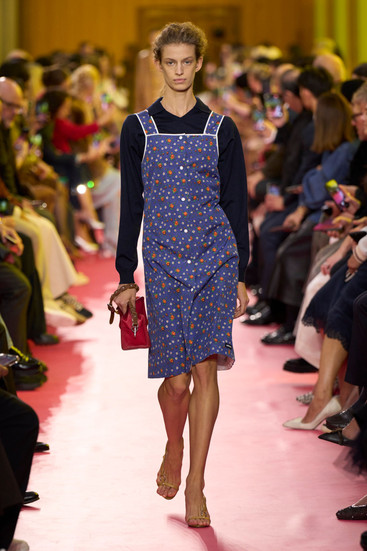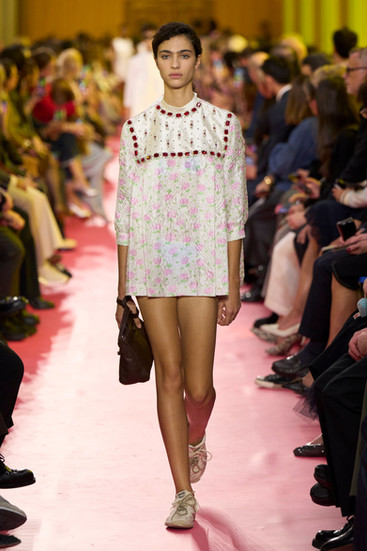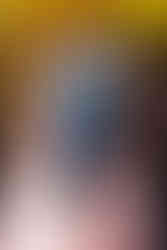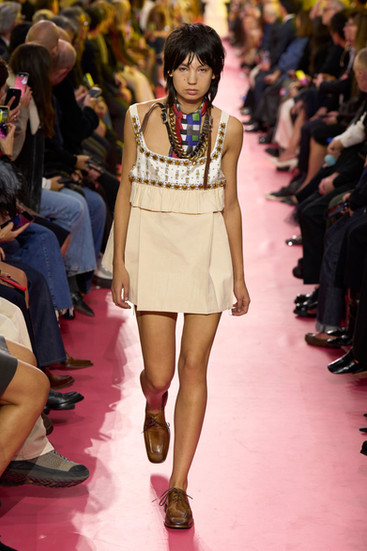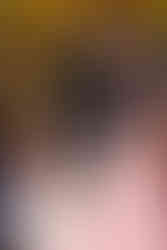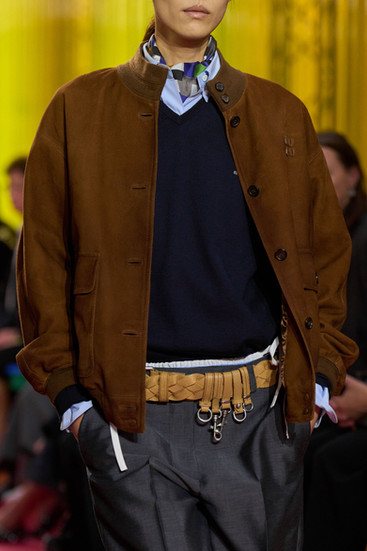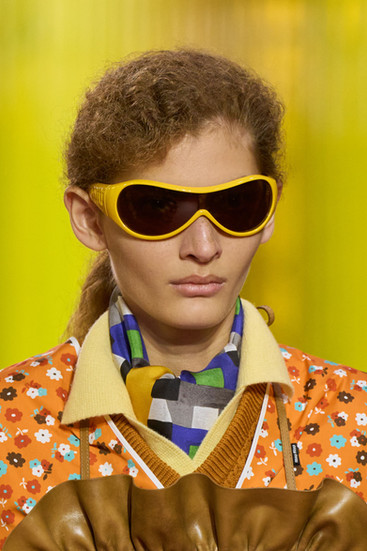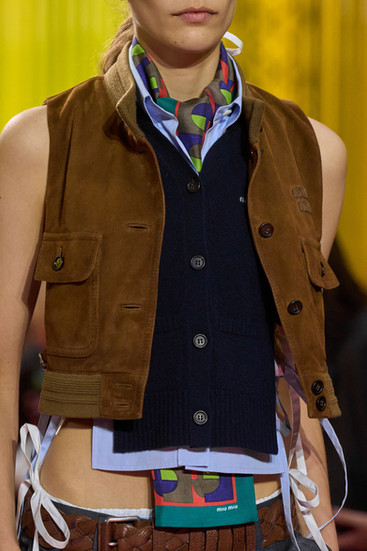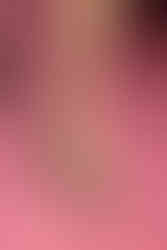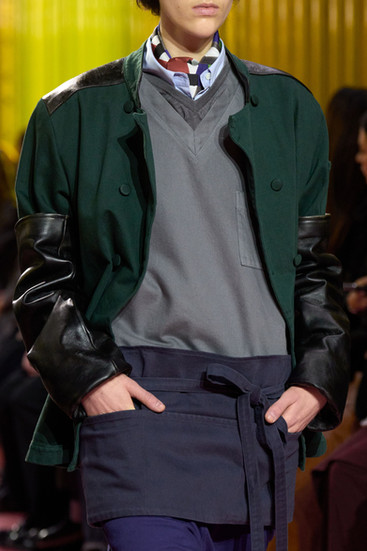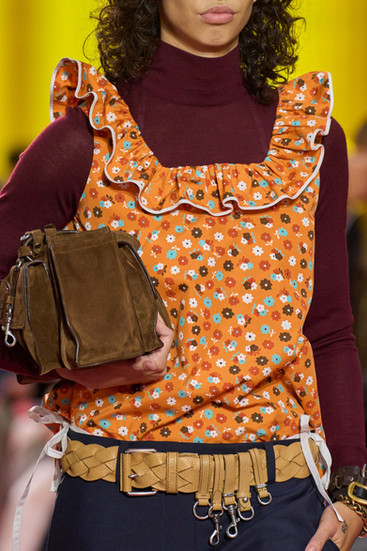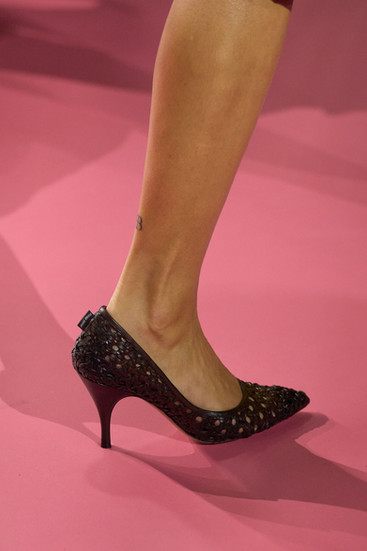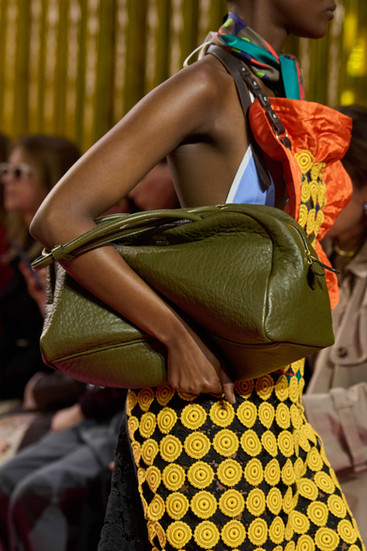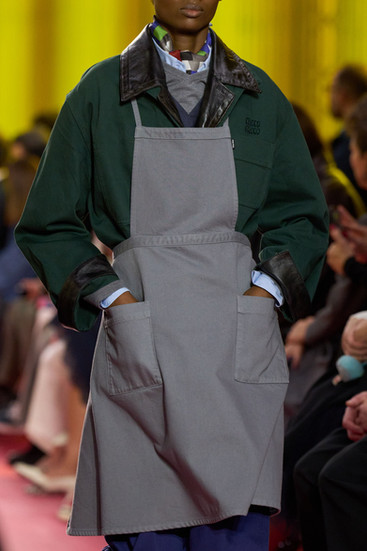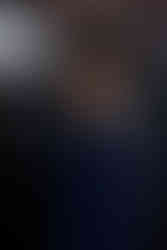Miuccia Prada’s working-class revolution at Miu Miu
- Camz

- 6 days ago
- 3 min read
The scent of cleaning fluid and revolution
Forget Versailles. Forget silk panniers and powdered wigs. While Marie Antoinette is being resurrected all over fashion’s glossy stages, Miuccia Prada decided to turn left, way left into the world of factory canteens and fluorescent lighting. The Miu Miu show opened with the scent of cleaning fluid still hanging in the air, red rubberized flooring underfoot, and melamine-topped tables standing in for the front row seats. One could almost expect the lunch bell to ring.

Sandra Hüller, the cerebral actress from Anatomy of a Fall, emerged first, hands buried deep in the pockets of a heavy-duty apron, as if she were about to polish the floor rather than open one of fashion week’s most anticipated runways. Her look was a declaration: this was a show about women who work, who scrub, who fix, who stitch and who never get credit.
Aprons, pinafores and the poetry of labor
Miuccia Prada, ever the philosopher, declared backstage: “We in fashion always talk about glamour or rich people, but we have to recognize also that life is very difficult.” And so she translated that difficulty into fashion’s most unexpected muse: the apron.
But not just any apron. These were protective leather aprons thick enough to survive a welding session, cotton drill pinafores straight from the assembly line, and canvas tool belts slung low on the hips, decorated with dangling D-rings and safety clips that clanked faintly as models walked. Bags resembled tool kits rather than purses. Boots looked ready for a double shift on a factory floor.
The palette oscillated between utilitarian neutrals: greys, off-whites, worn browns and flashes of defiant color: acid yellow lace, cherry red vinyl, faded blue chambray. The layering felt accidental, as if women had thrown these garments over whatever they already wore to survive another long day. Yet each piece was cut with the precision only Prada could orchestrate, making labor look disturbingly luxurious.
Invisible women, visible at last
Then came the shift from factory to household, from production lines to domestic corridors. Prada turned her gaze to another invisible workforce: cleaners, nannies, and housekeepers. The runway filled with models in floral wrap-over smocks, printed cotton coats that might have belonged to someone’s grandmother, and delicate dresses resembling the kind you wear when no one’s supposed to see you.

It was a haunting and oddly tender ode to the women who hold the world together without acknowledgment. You could almost hear the hum of vacuum cleaners and the clatter of dishes as silk met plastic, lace met latex. Prada had given the quiet dignity of domestic labor a couture-worthy platform and the audience, perched uncomfortably on canteen tables, watched in silence, perhaps wondering when they last thanked someone who cleaned up after them.
Lace, leather and a touch of irony
Just when it all risked becoming too earnest, Miuccia injected her signature irony. The apron, once purely functional, was suddenly transformed into an object of fetish and fantasy. It appeared in sheer lace, its domestic modesty undone by transparency; in black taffeta, its ruffles catching the light like eveningwear; in structured leather, sharp and sensual.
These pieces flirted with absurdity. One could easily imagine a red-carpet encounter next summer: one celebrity dressed as Marie Antoinette, the other in a Miu Miu apron. Both, equally fashionable, both equally absurd, but only one aware of the satire. Miuccia Prada knows that fashion loves to romanticize poverty as long as it’s wrapped in taffeta. And she, ever the provocateur, handed that hypocrisy back to her audience with a smile.
The feminist intellectual of fashion
Prada’s genius lies not just in design but in the intellectual friction she creates. Her runway is never merely a display of clothes; it’s an argument. “At the moment, I’m particularly sensitive to that,” she confessed. “Translating the aprons into fashion was more difficult. But I use the instrument I have.”

That instrument, of course, is fashion itself, her most persuasive form of social commentary. While others celebrate fantasy, Prada insists on reality, even when it’s uncomfortable. She transforms the mundane into the meaningful, the forgotten into the iconic.
The conclusion, or perhaps the punchline
By the time the final model disappeared, the smell of cleaning product still lingered in the air, as if to remind everyone that glamour is, after all, built on invisible labor. Miuccia Prada doesn’t romanticize that truth; she exposes it. And she does so with the most Prada-like of paradoxes: by turning a factory apron into a statement piece that will probably sell out by summer.

So next season, when someone shows up in lace and someone else in latex, remember that the real revolution may be happening quietly, somewhere in the back, hands in pockets, apron tied tight, getting things done.
ALL THE LOOKS:
DETAILS:
BACKSTAGE:
PRESS RELEASE:
VIDEO OF THE SHOW:
































